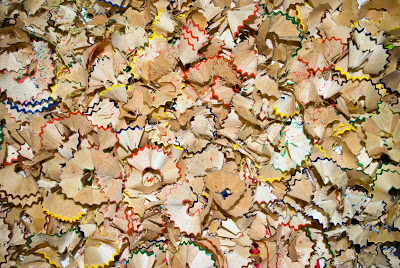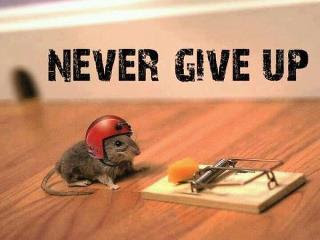I Dalarna finns en vacker plats vid namn Predikstolen. Där har jag inspirerats av naturens kraft och det vindunderliga i allt omkring oss. Jag tror inte alls att platsens namn är en slump… Den är SOM en predikstol och den lämpar sig alldeles utmärkt för sammankomster i fantastisk miljö. Jag har skrivit om Predikskolen i ett annat åseri:
Trehundratrettiosjunde åseriet- Predikstolen, en kontemplativ plats långt från kyrkan
I min barndom fanns det en sandlåda i mitt klassrum runt jul… Där skulle vi barn placera våra egenhändigt tillverkade små hus i papper. Husen hade platt tak och var små och fyrkantiga och skulle se ut på det sättet, för så såg det ut i Palestina på Jesu tid, enligt fröken… Hon placerade ut kameler och åsnor och små palmer och annat, som också skulle passa för berättelsen om Jesu liv som vi fick ta del av varje morgon. Varje barn hade ett tänt ljus på sin egen bänk. Mig veterligt var det ingen som ifrågasatte agendan… Man lyssnade på berättelser ur ”Barnens bibel” som morgonsamling just i advent. Man sjöng Bereden väg för Herran och Nu tändas tusen juleljus, båda med religiöst innehåll. Senare var religionskunskapen mer allmän, så allmän att den knappt berörde alls.
Mina lärare i högre årskurser hade en avslappnad attityd till ämnet och vi fick undervisning om många olika typer av religionsinriktningar vid sidan om de stora etablerade världsreligionerna. Både i högstadiet och i gymnasiet gjorde vi olika fördjupningsarbeten. För arbetet på högstadiet reste jag till Grödinge i Södermanland för att besöka Krishnakollektivet som höll till där. Planen var att jag skulle intervjua representanter för gruppen och vara där en halvdag tillsammans med dem. Jag sov hos en god vän natten innan och hennes pappa insisterade på två detaljer: att min vän skulle följa med mig in och att han själv skulle skjutsa oss dit och för egen del vänta i bilen utanför OM något skulle hända. Inget ovanligt hände, förutom att jag för första gången drack yoghurt blandat med vatten och mynta…
Något år senare lyckades jag få kontakt med en representant för Baghwansekten och intervjuade henne, medan rökelsen i hennes hem letade sig in i näsan och örtteet svalnade i tekoppen. Alla textilier i hemmet var i rödtoner och alla hennes kläder var löst sittande ”mysplagg” som matchade det hennafärgade håret. Hennes dyrkan av Baghwan var en gåta då och är nog det fortfarande och när jag såg filmatiseringen om Ted Gärdestads liv häromåret, så kände jag igen mycket av vad jag hade fått veta i intervjun.
I mitt yrke möter jag människor från världens alla hörn, med vitt skilda bakgrunder och olika livsåskådning. Många är nyfikna på vårt samhälle och vad vi bygger våra ställningstaganden på. Martin Nilssons insändare ”Frånvaron av religion gör Sverige framgångsrikt” (DN 190425) handlar om att det är just frånvaron av en genomsyrande religionstro i samhället som helhet, som bidragit till Sveriges framgångar i olika avseenden. Jag fann artikeln intressant, eftersom den tangerar något som rör skolan, nämligen vilket innehåll religionsämnet ska ha. Mina mor- och farföräldrar hade Kristendomskunskap i skolan och fick läxor ur lilla katekesen. De var alla födda före 1920. Mina föräldrar har berättat att de sjöng en psalm varje morgon. För egen del byggde jag vita pappershus i den där sandlådan till jul och skolavslutningens största hit i juni var med självklarhet Den blomstertid nu kommer… Men de många månaderna MELLAN de kyrliga högtiderna präglades av helt andra ämnen än religionsämnet.
Mina barn och deras generation går i kyrkan när någon de känner ska konfirmeras eller när någon släkting ska döpas, gifta sig eller begravas, men inte heller de där traditionella övergångsriterna är lika vanliga längre och de ändrar dessutom karaktär, till varianter av mer profan karaktär… Jag tänker att Martin Nilssons insändare därför äger sin riktighet. Vi har haft något annat som varit den givna drivkraften för samhällets utveckling, något annat än religionen. När Peter LeMarc för något år sedan kom med sången ”Min kyrka” kände jag igen mig i den. Naturen…skogen och markerna, en promenad längs en sjö eller i stark motvind på en enslig väg, ger mig ny energi! Det gör också musik, till exempel just den här:














 När jag kommit ut ur tallskogen hittade jag en ensam gran som uppfordrande pekade mot en granskog en bit bort. Jag bestämde mig för att göra granen till viljes… och sökte mig in bland de mjuka mossiga tuvorna där stenar och stubbar sedan länge gömts undan. I vilken granskog som helst tänker jag kanske inte på John Bauer, men i den här typen av orörd urskog, så är det svårt att låta bli… Det är en riktig trollskog! Så känns det! Vid något tillfälle under min promenad vänder jag blicken uppåt och ser torra grenar på en grupp med granar. Jag drar mig till minnes att granar ibland växer i grupp, som syskon… Det såg jag också vid besöket i den Nordamerikanska skogen Muir Woods sommaren 2016.
När jag kommit ut ur tallskogen hittade jag en ensam gran som uppfordrande pekade mot en granskog en bit bort. Jag bestämde mig för att göra granen till viljes… och sökte mig in bland de mjuka mossiga tuvorna där stenar och stubbar sedan länge gömts undan. I vilken granskog som helst tänker jag kanske inte på John Bauer, men i den här typen av orörd urskog, så är det svårt att låta bli… Det är en riktig trollskog! Så känns det! Vid något tillfälle under min promenad vänder jag blicken uppåt och ser torra grenar på en grupp med granar. Jag drar mig till minnes att granar ibland växer i grupp, som syskon… Det såg jag också vid besöket i den Nordamerikanska skogen Muir Woods sommaren 2016.



















